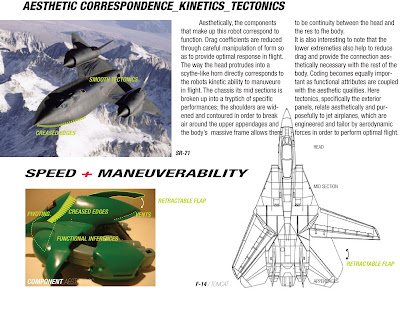Our first low-budget film.
Seeking to escape site-specific narratives, programmatic limitations and typological control; this class will explore architecture’s own generative and material capacities to become an organizational mechanism that relates to function.
During this academic term, we will make use of thorough digital experimentation. The use of advanced NURBS operations, computational fluid dynamics and parametric growth engines will be critical to challenge the formal conventions of building envelope and supporting systems—skin/surface/structure and the complexity of boundary definers, tectonic values and circulation areas.
Starting from the study of reference objects, we will identify particular relationships between form and performance, followed by a series of dynamic analyses that would define strategies for form optimization. Using the resultant geometry information as a driver, students will digitally model and modify the original profiles to satisfy the requirements of two architectural applications that will vary in scale.
Tuesday, September 30, 2008
Monday, September 29, 2008
Friday, September 26, 2008
Furniture


The aggregation and manipulation of one of the morphological pieces from Abigor lead to possible uses in furniture and wall treatments. More as a malleable surface that has enough rigidity to stand in place where needed. Its porosity has interesting applications when imbeded into the ground, structuring patterns of growth.
Thursday, September 25, 2008
Assignment 02: X Ratio Architectural Assemblage

Romero
From the morphological study of the tomato, the helix which represents its main internal structure has been translated to generate a triangular composition that functions as a pergola. The different planes created by the metal tubes makes possible the addition of triangular surfaces such as the case of the roof. These surfaces can even be shared by the adjacent triangular plan just by simple rotation. The study of performance seeks to concentrate on that particular feature of the structure.
Wednesday, September 24, 2008
Tuesday, September 16, 2008
Saturday, September 13, 2008
Assignment 02:X-RATIO MASSING
"A mass is enveloped in its surface, a surface which is divided up according to the directing and generating lines of the mass; and this gives the mass its individuality".-Le Corbusier[2].
What have we learned from the morphological analysis and how could we apply this knowledge in a variety of situations? By now, we will concentrate in a specific case: form and performance related to scale. If mass is defined by the amount of matter in an object, how can form—shape, appearance and configuration— accommodate mass magnitude? Would form and performance have a linear relationship when different scales are incorporated?
X-Ratio, our scale factor, will be one human body. Each student will develop an architectural assemblage related to the proportions of a person. While the absence of a specific program will allow a degree of detachment from frequently applied dimension standards; the use of human body proportions should establish a process for estimating the extents of the assemblage's corresponding magnitudes (length, width, height, location and direction).
Typology should be defined by the student, keeping in mind what constraints would add on to the fitness criteria. This first massing assemblage should adapt some of the material and organizational characteristics explored in our first assignment; this time, embracing architectural functions that meet a variety of performance demands, ranging from building construction implications to physical patterns that engage specific spatial and environmental conditions.
X-Ratio, our scale factor, will be one human body. Each student will develop an architectural assemblage related to the proportions of a person. While the absence of a specific program will allow a degree of detachment from frequently applied dimension standards; the use of human body proportions should establish a process for estimating the extents of the assemblage's corresponding magnitudes (length, width, height, location and direction).
Typology should be defined by the student, keeping in mind what constraints would add on to the fitness criteria. This first massing assemblage should adapt some of the material and organizational characteristics explored in our first assignment; this time, embracing architectural functions that meet a variety of performance demands, ranging from building construction implications to physical patterns that engage specific spatial and environmental conditions.
[2].Le Corbusier. Towards a New Architecture. London: John Rodker, 1931.
Thursday, September 11, 2008
Wednesday, September 10, 2008
Tuesday, September 9, 2008
Sunday, September 7, 2008
Assignment 01:MORPHOLOGICAL ANALYSIS (2)
Stage2:Analog to Digital
Students should calculate and accurately recreate the physical characteristics of the object, using NURBS operations in Rhino. To avoid literal associations, each student should focus on one or two points of the analysis that could lead to a distinctive aesthetic language linked to performance. The main output of this stage, a series of three-dimensional digital diagrams, should emphasize the student’s understanding of the reference object’s morphology.
Provide renderings, in both wireframe and flat shaded surface modes.
Students should calculate and accurately recreate the physical characteristics of the object, using NURBS operations in Rhino. To avoid literal associations, each student should focus on one or two points of the analysis that could lead to a distinctive aesthetic language linked to performance. The main output of this stage, a series of three-dimensional digital diagrams, should emphasize the student’s understanding of the reference object’s morphology.
Provide renderings, in both wireframe and flat shaded surface modes.
Friday, September 5, 2008
Thursday, September 4, 2008
Wednesday, September 3, 2008
Subscribe to:
Posts (Atom)
















































